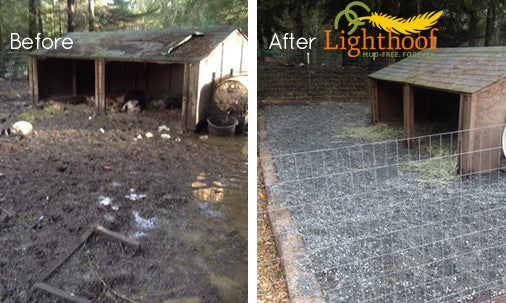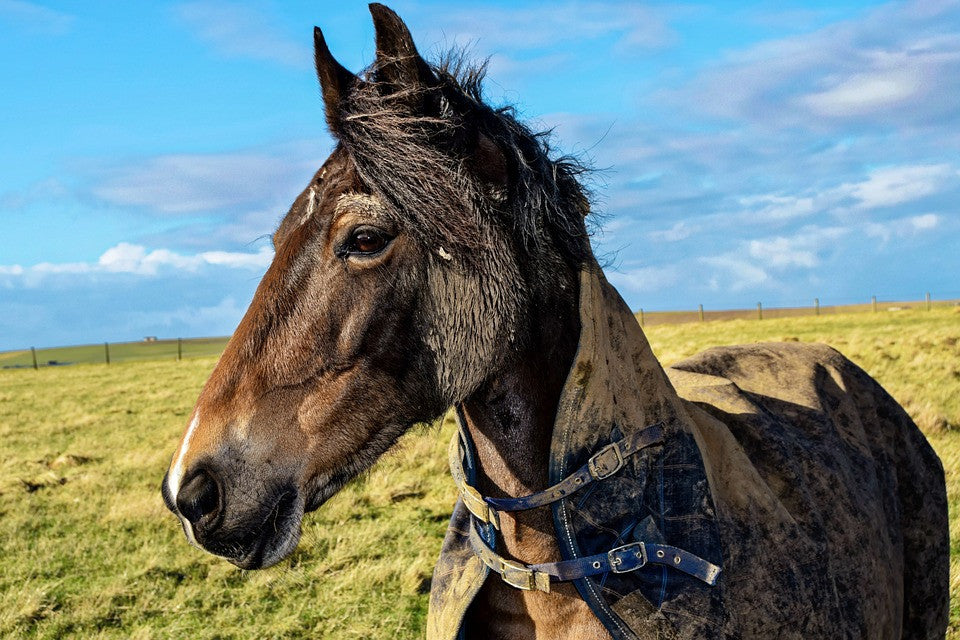A common misconception in the horse world is the idea that mud problems are solved by using a paddock footing material that is permeable or “drains through.”
Of course it would be lovely if wetness simply vanished into the ground beneath our horses’ hooves. Unfortunately, the reality is that this is simply never the case for a number of reasons.
Over time horse hair, hay scraps, and manure particles fill the gaps in permeable footing. Any material that can compact WILL compact in a high hoof traffic area, removing any drain holes from your system.
Any material that won’t compact (drain rock, pea gravel, etc.) is very unstable under the horses’ hooves creating dangerously slippery or sinking surfaces. Most previously muddy areas have a sub-base (ground underneath) that is compacted or saturated and won’t allow more water in. The water that you wish would drain through actually goes nowhere! It fills up your paddock footing like a dirty swimming pool.
Although creating some surface drainage features can work wonders to direct water away from structures and high traffic areas, trying to achieve drainage through your paddock footing into the ground below does not solve your mud problems.
 A firm and stable surface is they key to eliminating mud in horse zones. Lighthoof is not a drainage solution; it’s a mud solution. It creates a footing base strong enough to withstand heavy hoof traffic without breaking down. No matter how much rain falls or ground water flows into an area with Lighthoof, it remains firm.
A firm and stable surface is they key to eliminating mud in horse zones. Lighthoof is not a drainage solution; it’s a mud solution. It creates a footing base strong enough to withstand heavy hoof traffic without breaking down. No matter how much rain falls or ground water flows into an area with Lighthoof, it remains firm.
The quest for mud-free paddocks is not a fight against water. All the drainage redirection in the world won’t keep horse areas completely dry. The goal is not to eliminate moisture, it’s to keep the ground firm no matter how much moisture there is.
What creates that powerful firmness and strength? It’s the compaction of gravel inside of Lighthoof’s patented structure. The interlocked cells provide a skeleton for sturdy, compacted gravel.
The type of gravel and the compaction method are also essential to the success of your Lighthoof installation:
See the Lighthoof Gravel Guide for details on choosing the right gravel with the perfect make-up for firm compaction.





Leave a comment
This site is protected by hCaptcha and the hCaptcha Privacy Policy and Terms of Service apply.